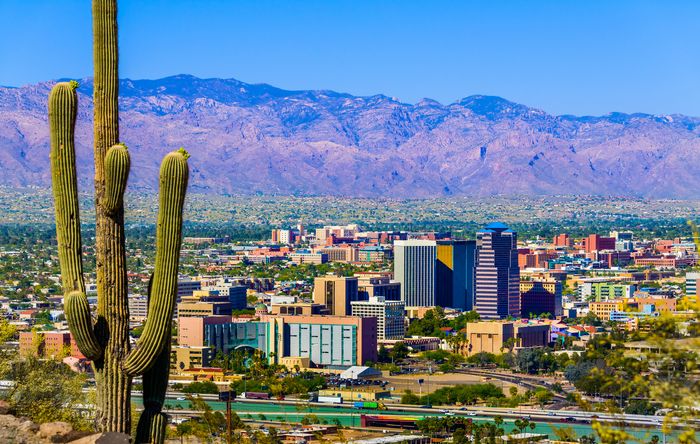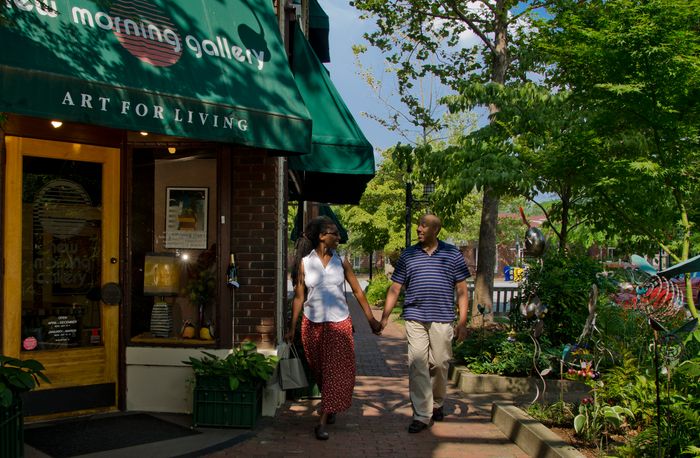Dear MarketWatch,
I’m a single, 50-year-old bicultural gay man considering an early semi-retirement due to ageism in my profession. I have $3.5 million in taxable investments (including the appreciation of my home) that I’d like to stretch as far as possible. Can you recommend a few U.S. cities that offer a robust medical infrastructure, vibrant cultural activities, warmer climates (no snow, and no humidity), an LGBTQ+-friendly environment and moderate-left demographics?
When I own a home, Airbnb might be an option for side income. And it would be nice to have a place that’s tax-friendly for retirees.
A place with welcoming, community-minded and educated locals would be great. I want to feel safe in a new home.
Wai
Dear Wai,
I’m sorry you feel you’re being pushed out of your job. At least you’ve saved well, and that will give you options and, I hope, reduce your stress. I’d still encourage you to consider hanging on, though, while you explore your options.
Given your wish list, you are headed for a major city or its suburbs unless you are OK with some compromises. It would be really easy to tick off a few big, expensive cities — such as San Diego and Denver — but I want to give you a broader range of possibilities.
I also hate to repeat myself, so if you’re interested in the Pacific Northwest, I’ve already spotlighted Eugene, Corvallis, Salem and the Portland suburb of Vancouver, Wash., among others. Just be prepared for rainy winters instead of summer humidity and, these days, the risk of smoke from wildfires.
You can read about three more LBGTQ-friendly suggestions here. You may also want to consider cheaper college towns with less-than-perfect weather. You’ll be retired; you don’t have to go anywhere when it’s snowing, for example. The MarketWatch “Where Should I Retire” tool can help you identify counties that might be a good fit.
As you know, workplace upheavals because of COVID have unleashed bidding wars in some housing markets, so it’s good that you’re willing to rent first. Still, given your desire to both eventually buy a new home and to stretch out your funds, please take the time to map out your likely spending, including on healthcare before Medicare, and come up with an annual budget as well as a limit for your eventual house purchase.
Be conservative; there are always unexpected costs, and the stock market may not cooperate with your dreams.
Taxes will look different in retirement, given that your sources of income are different, and of course tax laws change. You can use this tax calculator from SmartAsset to get a sense of how it might look in different states; you still may want to consult a tax professional.
Here are three possibilities to get you started.
Tucson, Arizona

Tucson’s skyline framed by a saguaro and mountains.
Getty Images/iStockphoto
For LBGTQ+-friendly, I turned to the Human Rights Campaign and its Municipal Equality Index. The HRC, a major gay-rights advocacy group, looks at factors like whether the city has nondiscrimination laws for housing, a human-rights commission and an LGBTQ liaison in the mayor’s office, as well as whether it provides services to or supports LGBTQ elders.
Tucson is one of three Arizona cities it rates that has a perfect score (Phoenix and Tempe also scored 100). Tucson, home to the University of Arizona, is slightly cooler — and cheaper — than Phoenix. It’s also smaller: about 540,000 people (and just over 1 million in Pima County), compared with Phoenix’s 1.65 million residents (and nearly 4.5 million in Maricopa County).
Finally, it also rated highly when I turned to MarketWatch’s “Where Should I Retire” tool.
You can read more about Tucson and its cultural attributes here.
While Tucson has some of the state’s best hospitals, according to U.S. News & World Report’s rankings, there are more in the Phoenix area, including a Mayo Clinic, about two hours away from Tucson.
A tradeoff if you move to the Southwest is that, while humidity is low, it’s still hot. The average July high in Tucson is 100 degrees, and it seems to be getting hotter. Plus there’s the risk of a water shortage in the coming years.
The median listed price for homes for sale in Tucson was $299,900 in August 2021, according to Realtor.com, which, like MarketWatch, is owned by News Corp. See what’s on the market right now using listings on Realtor.com.
Asheville, North Carolina

An Asheville stroll.
Courtesy Explore Asheville
To my surprise, liberal Asheville, a city of 95,000 in the Blue Ridge Mountains, doesn’t have an HRC rating. But Buncombe County votes blue, unlike much of the rest of western North Carolina.
Asheville, a perennial on lists of great places to retire, is known for both its craft beer (the most breweries per capita in the U.S.) and its music scene. No surprise, then, that the area attracts millions of visitors every year. That could be good for your Airbnb wishes as long as you comply with city rules.
You’ll also find the robust medical infrastructure you’re seeking and plenty of entrepreneurs if that’s a direction you want to explore. In terms of other ways to flex your brain power, UNC-Asheville has 3,600 students as well as the Osher Lifelong Learning Institute catering to retirees.
The city has a moderate four-season climate. You’ll get some snow, but average winter highs are in the upper 40s or lower 50s. Average summer highs are in the mid-80s.
When you want to go beyond the many outdoor options in the area, you can fly from Asheville Regional Airport or opt for the one in Charlotte, two hours away.
You’ll hear complaints that Asheville is too crowded, that’s not what it used to be, that it’s too expensive. You’ll have to decide for yourself. Start your housing search in the West Asheville and River Arts neighborhoods. Overall, the median list price for a home in Asheville was $389,900 in August 2021, according to Realtor.com. Here’s what’s on the market now.
If Asheville’s not quite right, consider Hendersonville, described here, and Brevard, described here.
Covington, Kentucky

Covington’s riverfront.
Courtesy meetNKY
This is my wild-card pick, and I can imagine the skepticism. But take the time to see whether Covington’s talk of embracing diversity stands up for you. It’s one of the first cities in Kentucky to have adopted an LBGTQ anti-discrimination measure called the Fairness Ordinance, and it gets a 96 from the Human Rights Commission. It’s not a new thing, either: Covington claims the only library in the South that was never segregated.
In this city of 40,000, you’ll find a walkable downtown (including new housing) and historic districts that include a revitalized 19th-century German neighborhood — MainStrasse — that has bars and restaurants along with its historic homes. Another historic district fronts the Ohio River. And, of course, you’ll hear about the area’s Bourbon Trail.
Cincinnati, with its big-city amenities, is a walk across the John A. Roebling Suspension Bridge (think of it as a prototype for the Brooklyn Bridge).
Once you hit 65, you can take classes for free at Northern Kentucky University, which has 14,000 students.
Unlike in Asheville, you won’t have mountains at your doorstep here, if that’s your thing. Instead, get your nature fix in the hills of Devou Park, then explore Bender Mountain Nature Preserve 12 miles away on the Ohio side of the river and Shawnee Lookout farther west.
Equally, you won’t find the chain stores — those are centered a few suburbs away in Florence.
You will have to accept summer humidity and average summer highs a few degrees warmer than in Asheville, an average of about a foot of snow each year (similar to Asheville) and average winter highs of around 40.
The tradeoff is a much more affordable housing market; the median list price for a home was $169,900 in August 2021, according to Realtor.com. Here’s what’s on the market now.
Not quite right? What about a college town like Bloomington, Ind., home to Indiana University?
Where should Wai retire? Leave your suggestions in the comments section.
More from MarketWatch’s “Where Should I Retire” series
We want a $250,000 home within an hour of the mountains or the ocean — where should we retire
I want to retire in ‘a liberal-thinking area’ on $3,000 a month, including rent — where should I go?



